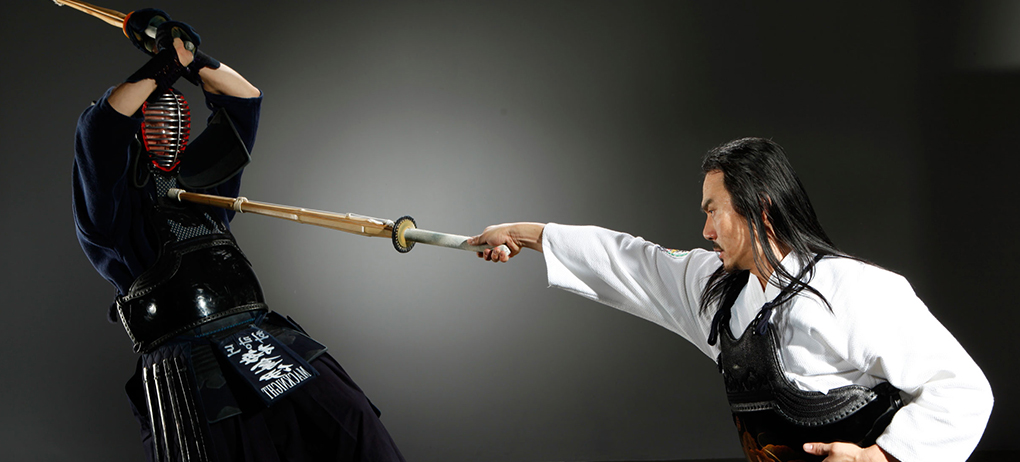The history of Kumdo and Kendo is intertwined such that, stylistically, they are very similar. Some have gone on to say that Kendo relies on patiently waiting for an opening to reveal itself before striking, while Kumdo is more proactive in using techniques to create opportunities to strike. Whatever the differences, they are very slight, as can be evident when watching a match between the two methods.

Secondly, Gumtoogi matches fighters with different types of swords against each other, changing the balance and attack strategy for each encounter dramatically. An attacker with a long sword has to radically change the way he will engage an opponent with twin swords or one sword and one short sword, for example.
Is it Japanese or Korean?
There has always been much chatter about Korea & Japan’s relationship in regards to martial arts traditions. Although this is not a subject that Koreans like to discuss as it brings up old wounds and the Japanese avoid admission, we feel it is necessary to bring clarity starting with our pupil.
The use of the specific bamboo armor and style of sword fighting utilizing the bamboo sword was created by the Japanese in the early 17th century and was introduced to Korea during the Japanese Occupation from 1910 to 1945. During the Occupation, Koreans were not allowed to practice any Korean cultural arts, speak Korean or even promote anything Korean as they attempted to commit cultural genocide. Still today, the Japanese have yet to accept responsibility for many of the atrocities committed during the occupation. These are the unfortunate tragedies and the realities of war. What’s done is done! In place of Korean cultural arts, the Japanese introduced three fundamental Japanese martial art styles, which were Karate (Gong Soo Do or Tang So Do in Korean which was later renamed as Tae Kwon Do in the 70’s and made into a Korean National Sport at which time Dojoonim left Korea), Judo (Yudo in Korean), and Kendo (Kumdo in Korean). Therefore, they might resemble each other but the Koreans have added their own style & flare to what the Japanese left us with. To say who came first, the Japanese or the Koreans is like asking what came first, “the chicken or the egg.” Therefore, since the Japanese have created the armor and the uniforms necessary to efficiently practice sword fighting safely, we have decided to use the Kendo/Kumdo armor by adding a modification in the form of a leg protector (Hache Hogu), allowing leg strikes as well as spinning cuts to exercise the full breadth of our curriculum. However, we have developed out own Uniform with the “Gumpo” instead of the Japanese Hakama. That is also the reason why we have created our own name of “Gumtoogi” to avoid further confusion, as we are not attempting to promote Kendo/Kumdo, but our own style of sword fighting, borrowing from the existing armor and equipment. We are not trying to take something Japanese and call it Korean as it is the debate with the current Kendo v. Kumdo argument, but to create our style of sword fighting and to make possible what was previously not.
